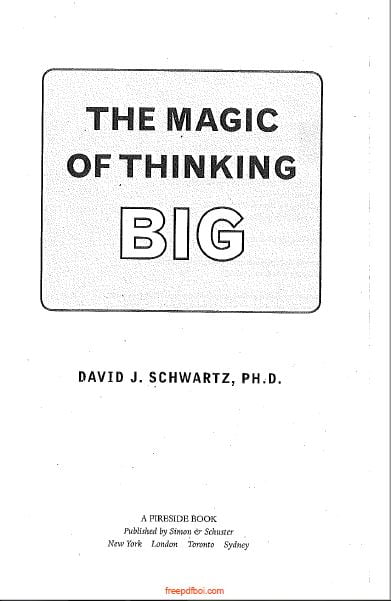

Then they take some form of action to conquer that fear. Big thinkers first isolate their specific fear and pinpoint what exactly is making them afraid. Successful people know that confidence is the antidote to fear, and confidence is a habit anyone can develop. Fear in all its forms - worry, tension, embarrassment, anxiety and panic - can be crippling, blocking you from reaching your goals. They don’t let circumstances hold them back, and use setbacks to propel themselves forward.Įveryone faces fear at some point. Instead, they focus on what they can do, not what they can’t. They blame their lack of intelligence or luck.īig thinkers don’t fall back on these common excuses. They blame their health, or say their age is holding them back.

Unsuccessful people make excuses about why things haven’t worked out. Don’t let petty arguments and perceived insults derail you from your course. See the possibilities in a situation, not just what’s in front of you.Don’t bring yourself down with negative words. Talk about yourself and others using positive, favorable words. Develop a “big thinker’s vocabulary” of positive words.There are four key strategies to thinking big: “Thinking big” means not limiting your possibilities - knowing you are capable of reaching lofty goals and achieving success. In contrast, believing in yourself generates the energy to achieve your goal and overcome obstacles.

Disbelief in your own abilities makes failure a self-fulfilling prophecy. But regardless of the goal, successful people have one thing in common: they believe in themselves. Success means something different for all of us because we all have different goals. At a high level, the ideas split into two categories: 1) mindset, 2) behavior. The Magic of Thinking Big covers a wide range of ideas on what contributes to success. 1-Page Summary 1-Page Book Summary of The Magic of Thinking Big


 0 kommentar(er)
0 kommentar(er)
